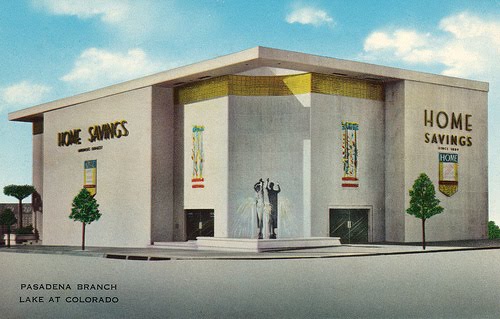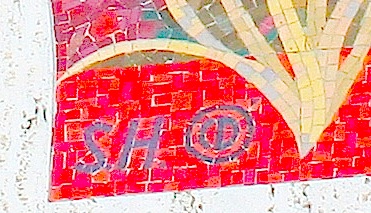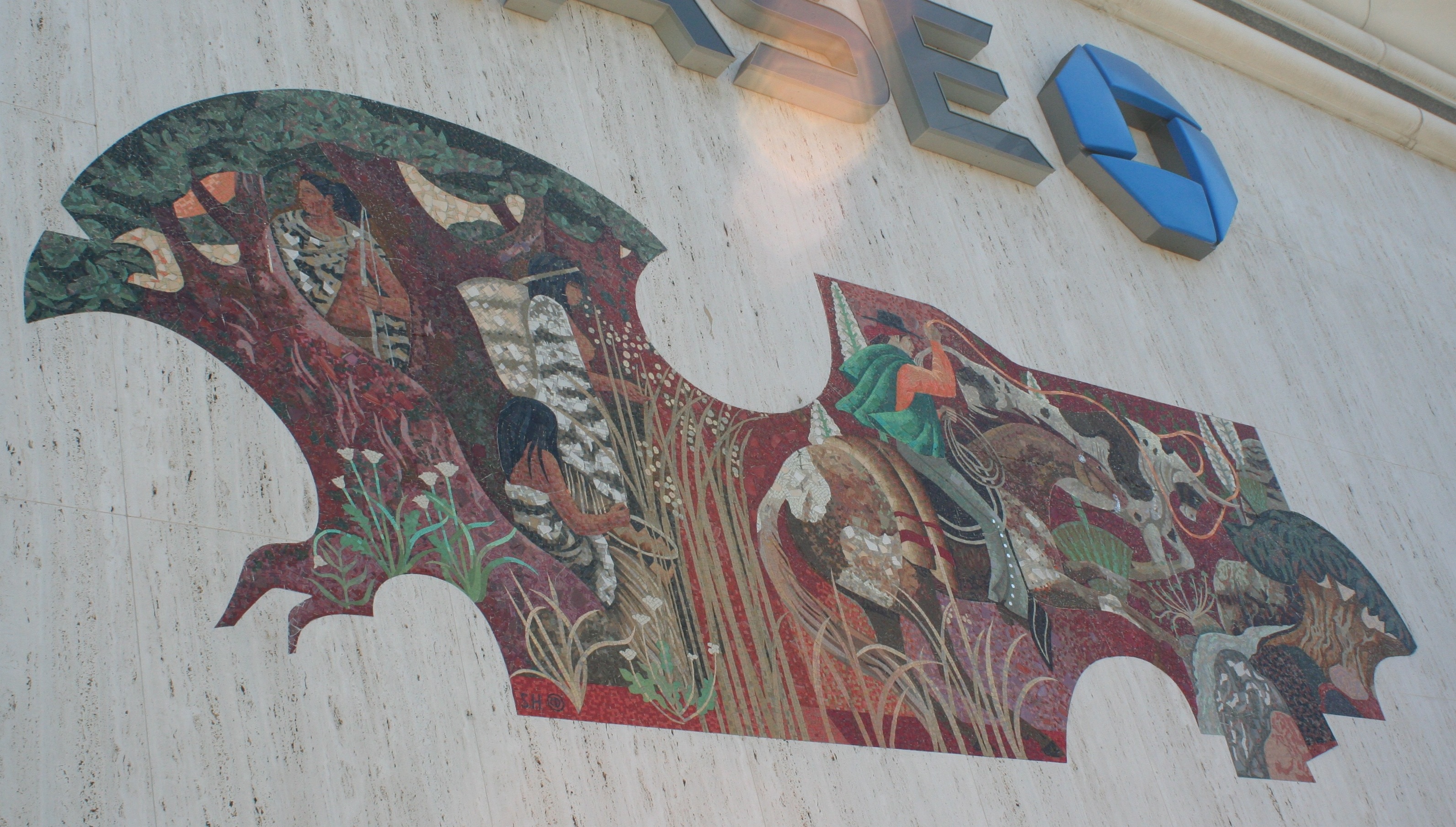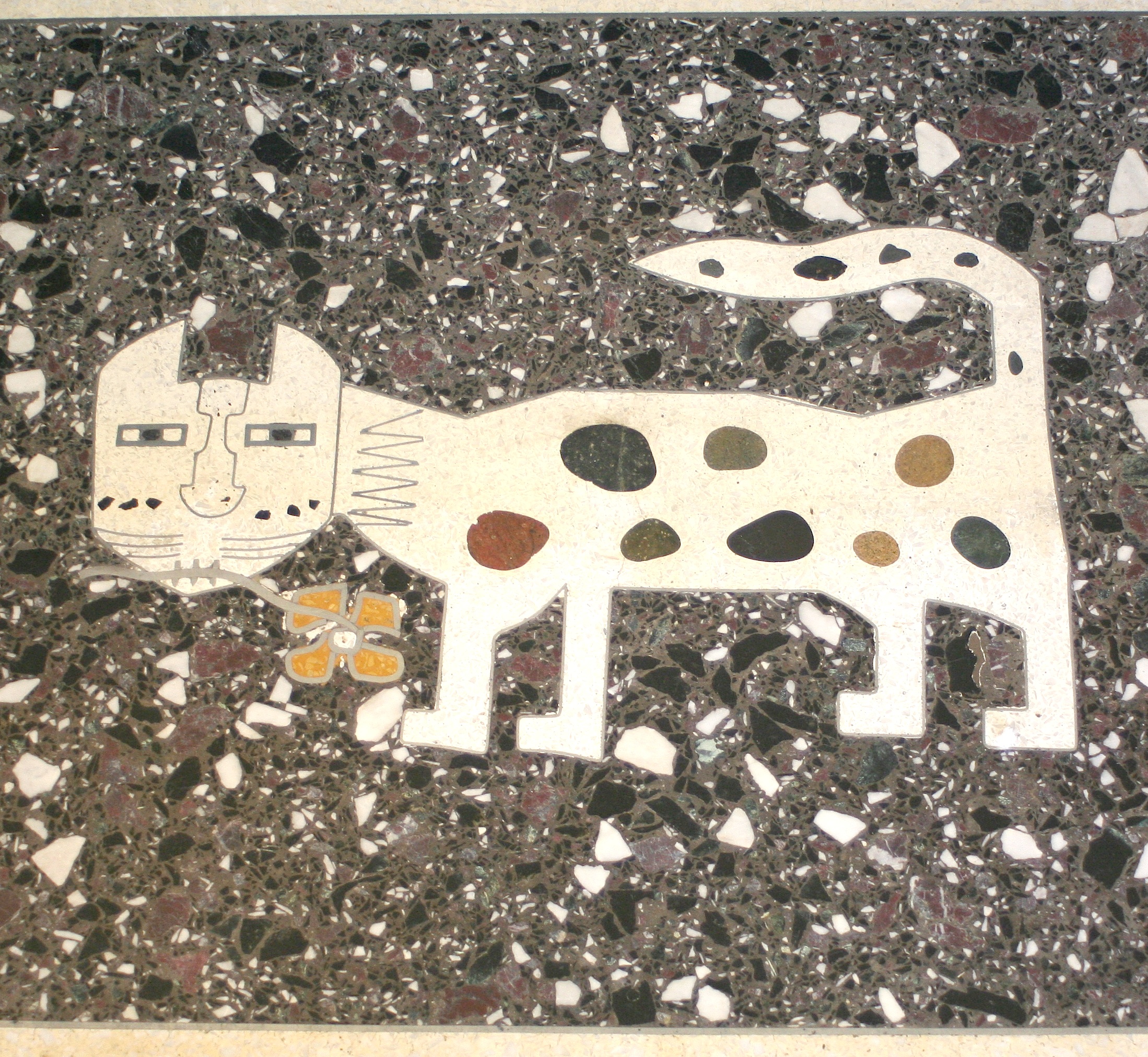The Pasadena bank at the corner of Lake and Colorado has been a focus of Home Savings art conservation in the last year, as Chase’s makeover of the location — new color palette, new entrance, new thick Plexiglass over the tellers’ windows — changed the experience of the bank radically.
The much-loved painting by Millard Sheets of Pasadena’s iconic Tournament of Roses parade was taken down, and as of last report, it is still seeking a permanent home in Pasadena where it will be both secure and on public display. (This report suggests the Pasadena Convention Center — as my history of this work will consider the interplay of public art and commercial spaces like banks, it says a lot about how society has changed that new venues being considered have to be public or nonprofit spaces, to guarantee the artwork, even despite the California law forbidding such artwork from being destroyed, regardless of location; see some discussion here.)
But sometimes lost in the discussion are the elements of the original Home Savings artwork that almost always remain on site: the sculptures. They are heavy, they tend to be more tall than wide, and hence even new arrangements seem to welcome them easily, even while divorcing them from their original context.
I have yet to figure out where (or if) the sculptures were signed, but I am told by Brian that the sculptors involved were John Edward Svenson and Albert Stewart. Some further information about them can be found here and here, respectively, but I must say they seem the most unsung part of the collection of artists and architects working in the Sheets Studio.
What to make of the sculpture? They are almost always family scenes, with some animals (dolphins on Santa Monica Blvd., for example). Men, women, and children enjoying one another’s company, normally in a nondescript way — walking, embracing, singing maybe. But not, say, driving, working, shopping, or, obviously, banking.
Like all of this artwork and architecture, the Sheets studio was working to create a welcoming space, with art that ennobled the experience of banking, and celebrated life — not in the means of the transaction, but in the life of that community, its history, and its pastimes. For a bank to endorse and pay for such work seems a throwback — though, I gather, these artworks paid for themselves in increased attention, increased deposits, and increased bank loyalty. Like the ongoing discussions of Mad Men‘s popularity and meaning suggest, perhaps it is this present-reality/past-ideals contrast that feeds the work’s unflagging popularity.
This week more individuals motivated by the cause of saving and understanding the art and architecture of the Home Savings banks have been in touch, and I appreciate it! I look forward to continuing to learn about this remarkable work, and sharing images and insights here on the blog, at the Urban History conference in October, and onward from there. Keep getting in touch!
Update: Thanks to an email from John Svenson’s son David, I have learned that the work above is Albert Stewart — and that his father, 87, is demonstrating his craft and signing books at the Millard Sheets Center at the LA County Fairplex this month.) He also noted that Paul Manship did the sculpture in front of the Hollywood bank. Thanks again for everyone who is adding information!






